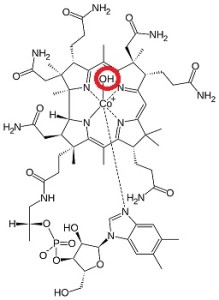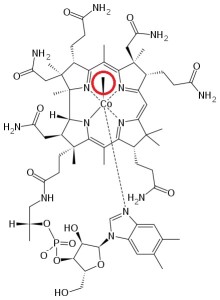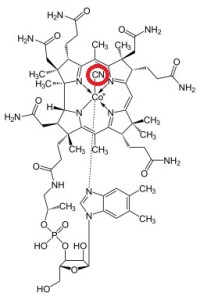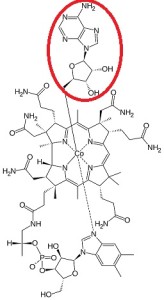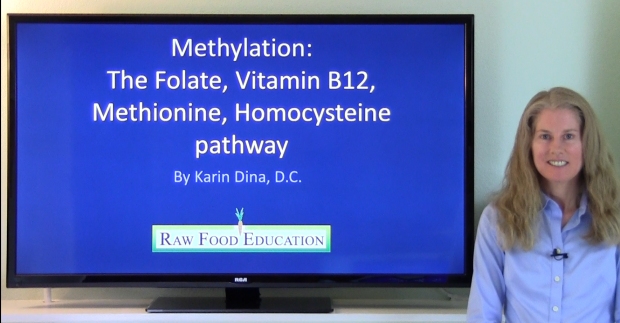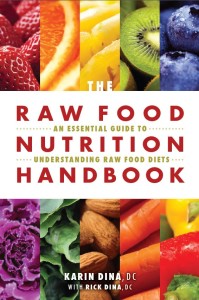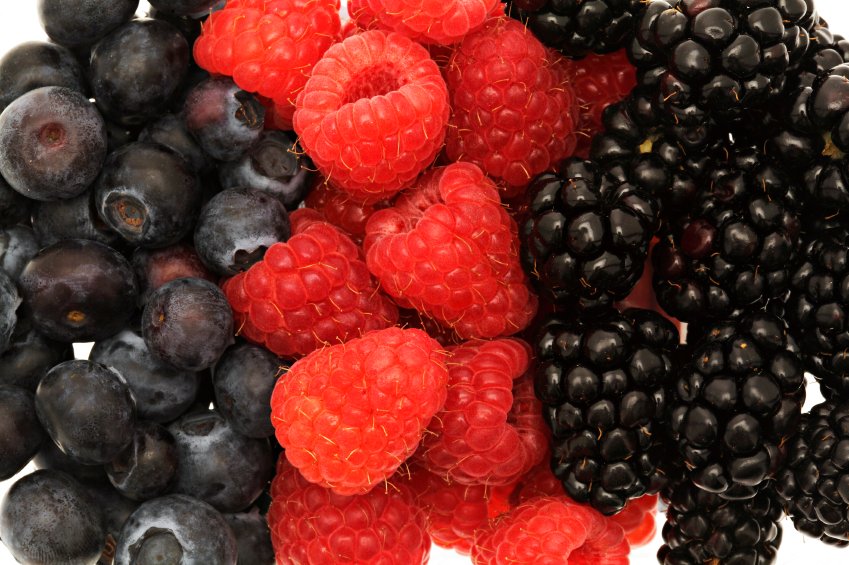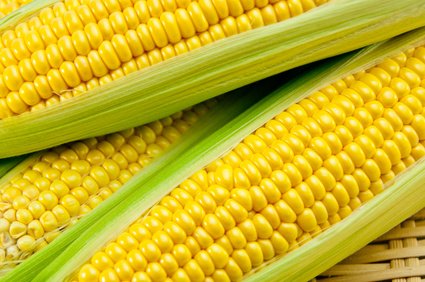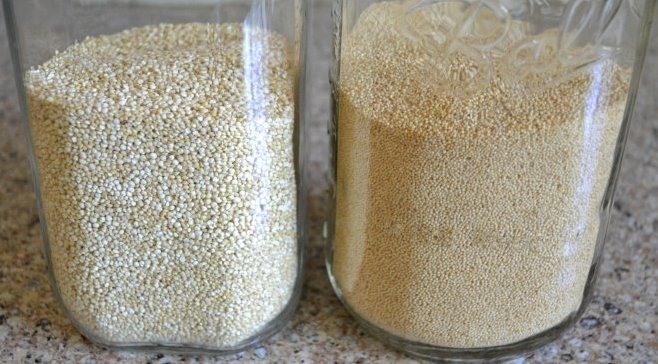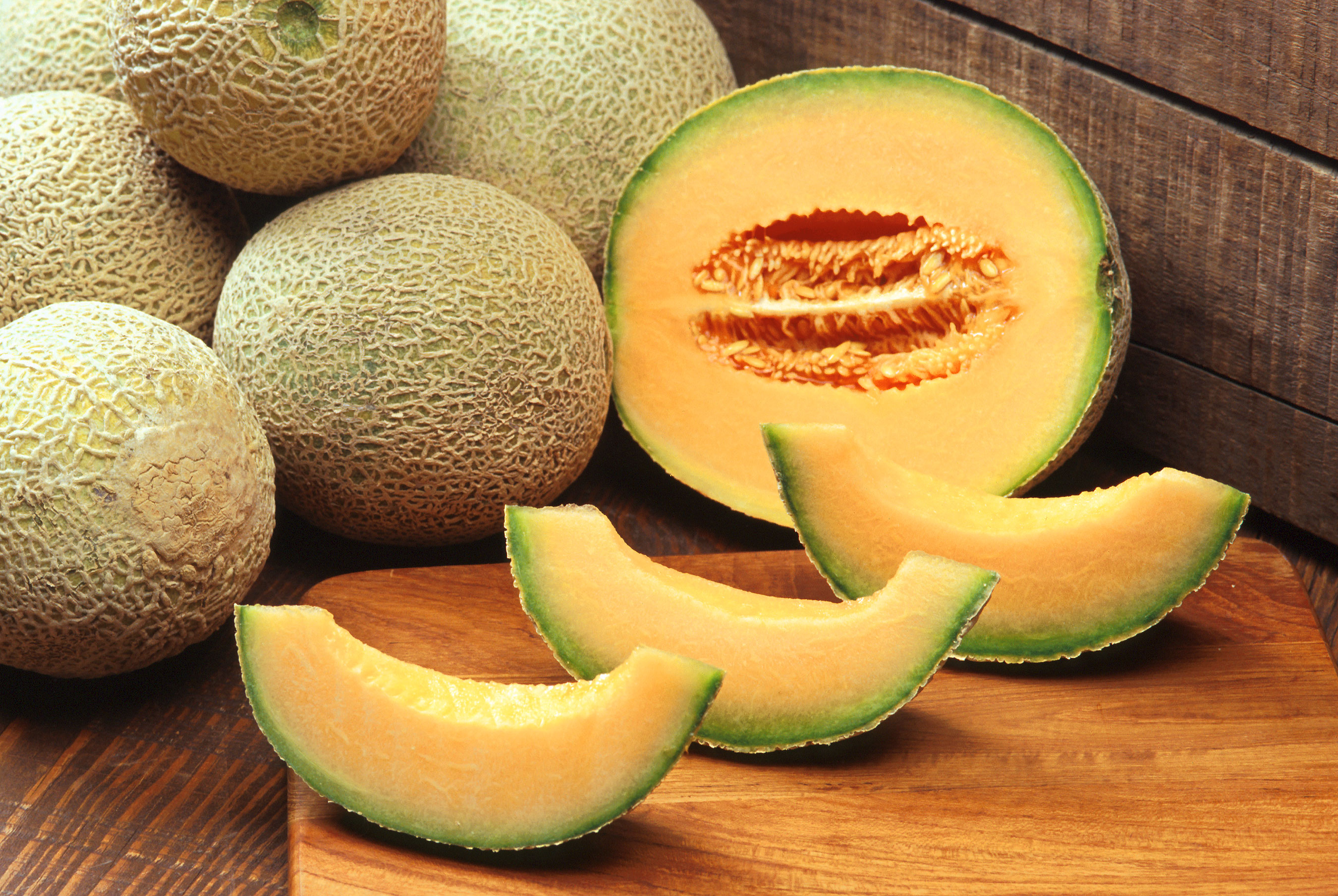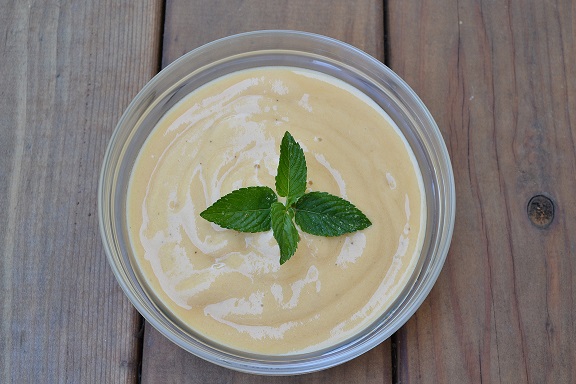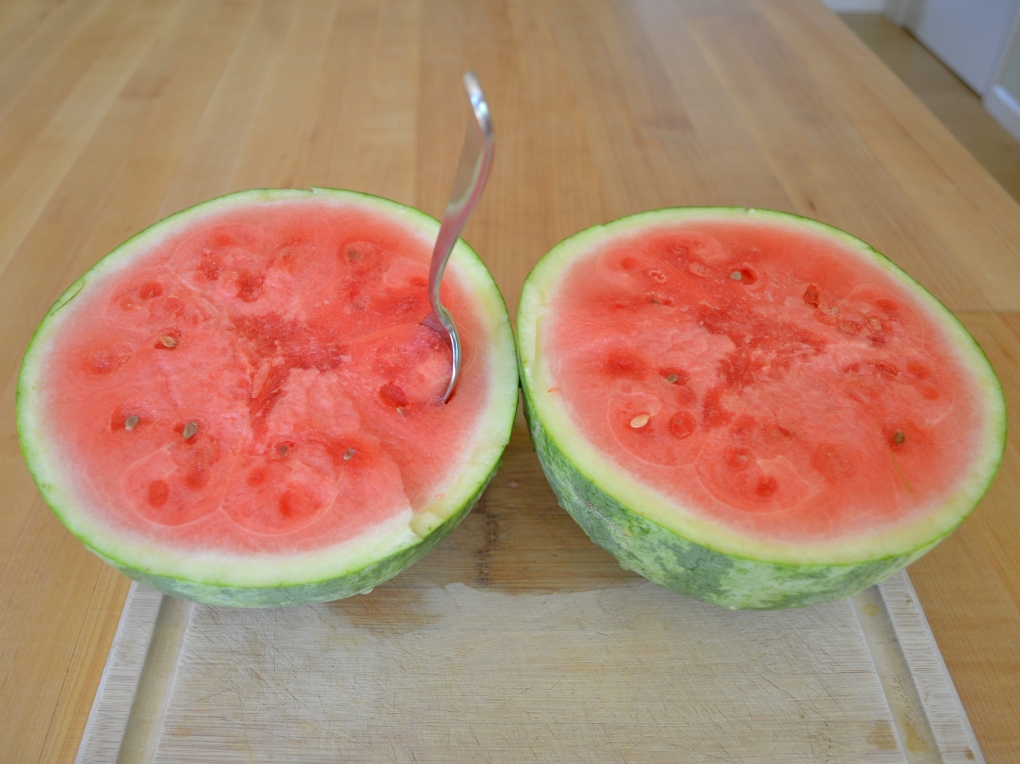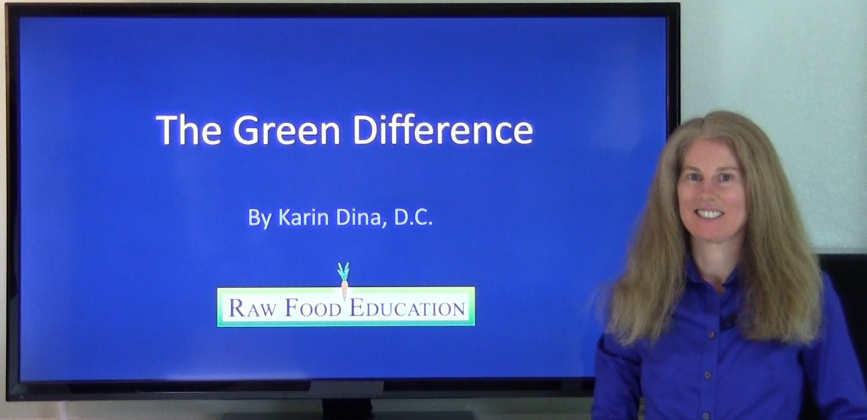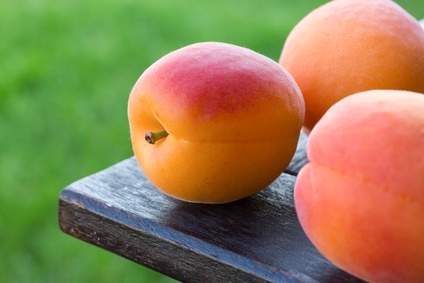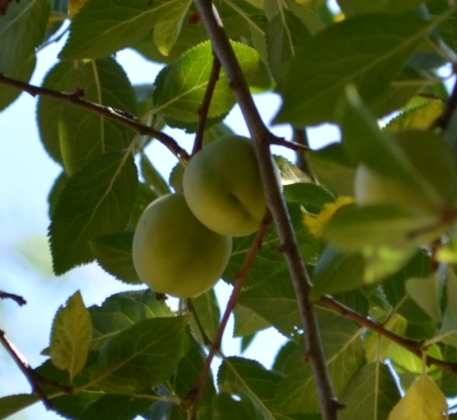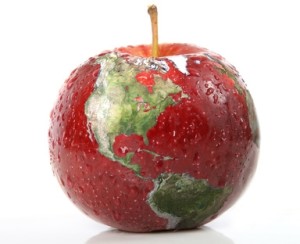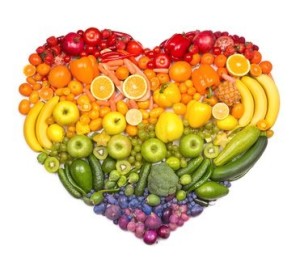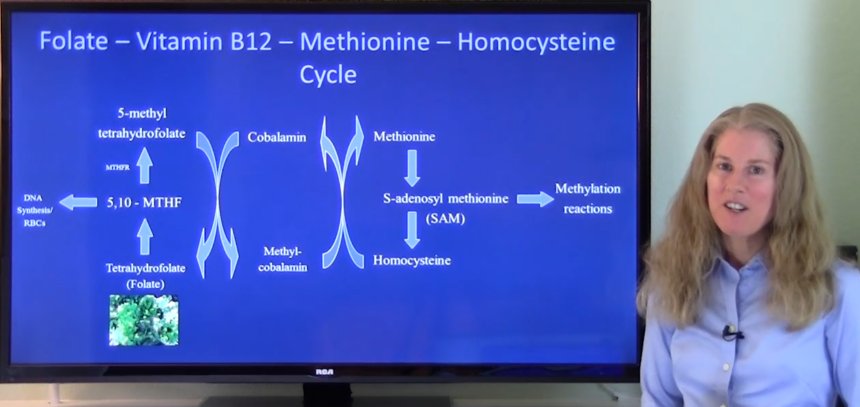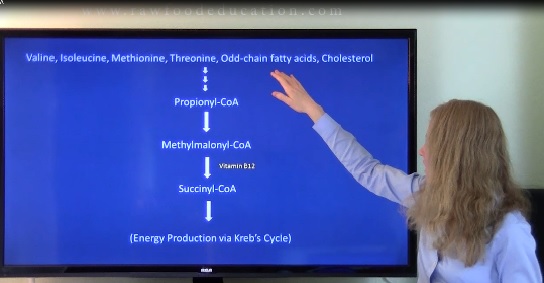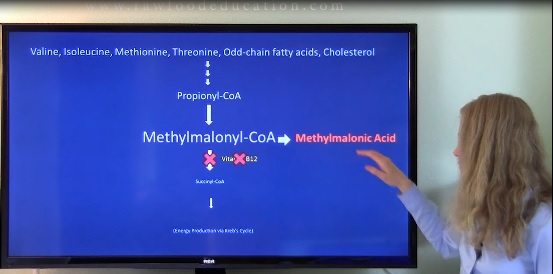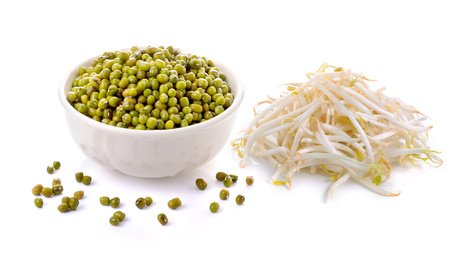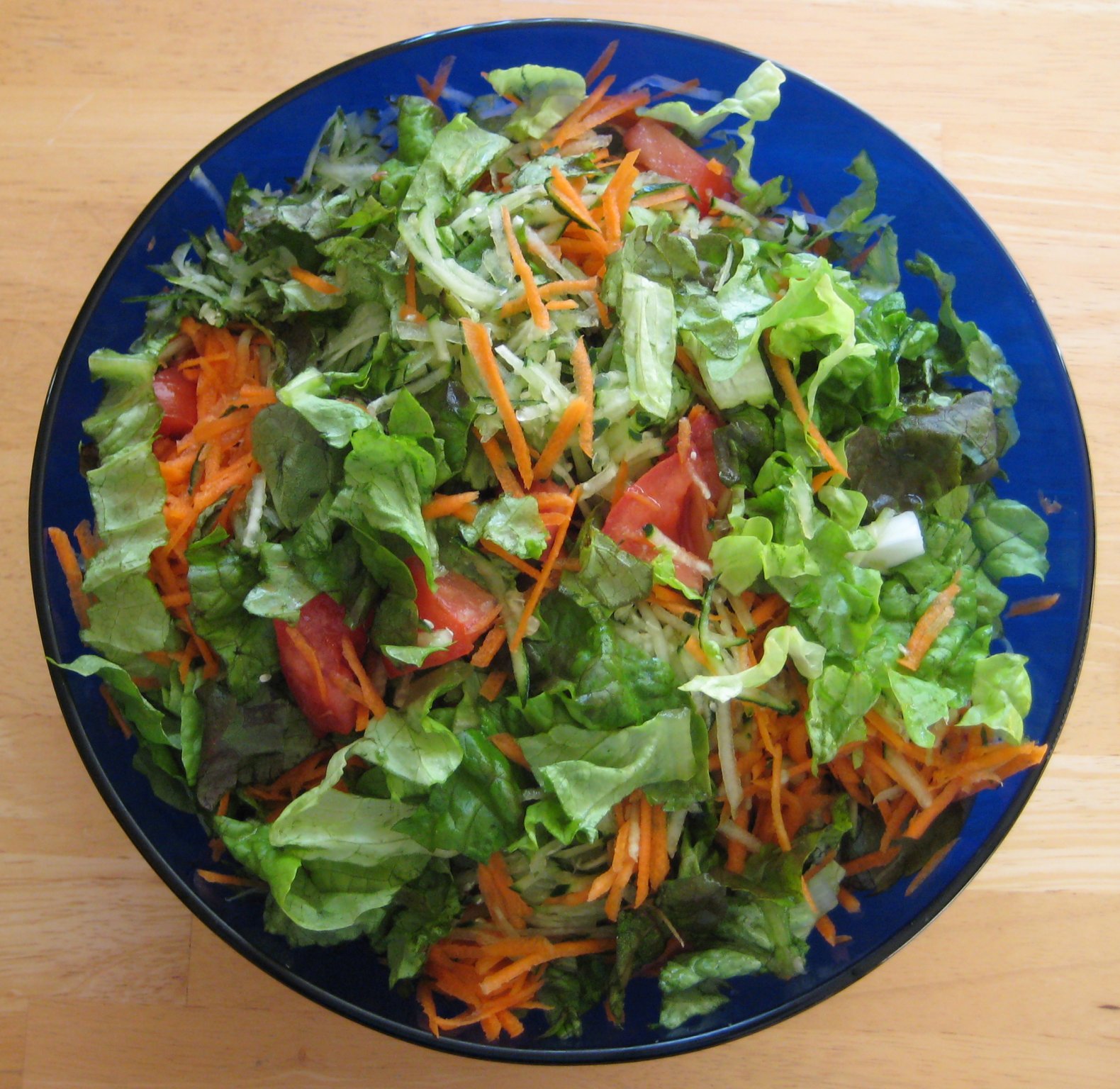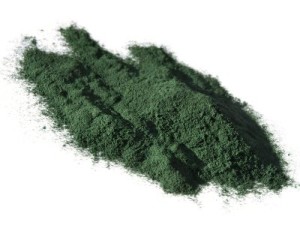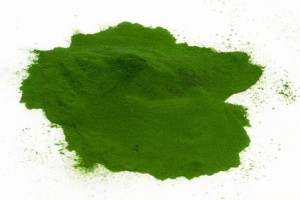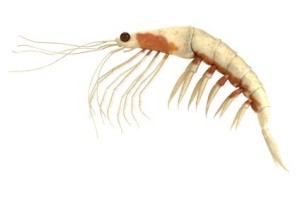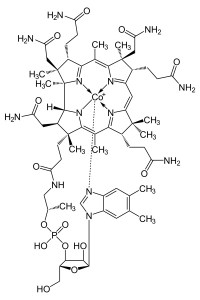 Over the years, people have asked me about the differences between the available supplemental forms of vitamin B12. What are they? Do they occur in nature or are they made in a laboratory? Do some forms work “better” than others?
Over the years, people have asked me about the differences between the available supplemental forms of vitamin B12. What are they? Do they occur in nature or are they made in a laboratory? Do some forms work “better” than others?
The scientific name for vitamin B12, cobalamin, is derived from the element cobalt found at the center of the vitamin B12 molecule. There are several different forms of vitamin B12, each named for the chemical group attached to cobalt, including hydroxocobalamin, methylcobalamin, cyanocobalamin, and adenosylcobalamin. I have seen these forms of B12 available as individual supplements or in multivitamin formulas.
Hydroxocobalamin
Hydroxocobalamin is a naturally-occurring form of vitamin B12, as it is made by certain bacteria including some strains that live in soil. Not all types of bacteria make vitamin B12 and not all soil contains B12 producing bacteria. Yeast, mushrooms and other types of fungus do not produce vitamin B12, neither do animals nor plants.
Hydroxocobalamin is NOT active in the human body; it requires conversion to a human bioactive form. Hydroxocobalamin has an –OH (hydroxy) group attached to cobalt in the center of the vitamin B12 molecule. To activate this form of B12, the human body removes the –OH group and replaces it with, for example, a methyl (–CH3) group to create the human bioactive form of vitamin B12, methylcobalamin.
Methylcobalamin
Methylcobalamin is a form of vitamin B12 that is involved in methylation reactions in the human body. Another of my videos covers the importance of methylation and the role played by this form of vitamin B12, so I would encourage you to view it for further explanation. Dr. Rick and I have used methylcobalamin for many years and find it to be a reliable form of B12 for our needs. We especially like this form of vitamin B12 because it is a human bioactive form and does not require conversion.
Cyanocobalamin
Cyanocobalamin is a synthetic form of B12 made exclusively in a laboratory. It is not a human bioactive form of vitamin B12 and is not made by bacteria in nature. Cyanocobalamin has a –CN (cyano) group attached to cobalt in the center of the vitamin B12 molecule. Many people have expressed concern about this cyano group as being problematic or toxic, but I have yet to see research or clinical data indicating the use of cyanocobalamin as being associated with these types of issues. When one expresses concern to me, I suggest the use of another supplemental form. As mentioned earlier, I have been using methylcobalamin for many years with good results. If someone is not getting the results they want from their vitamin B12 supplement, clinically or otherwise, I suggest that they contact a qualified healthcare provider to help them find the solution that works best for them.
Despite this controversy, cyanocobalamin is one of the most popular supplemental forms of vitamin B12 because of its stability and shelf-life. For example, cyanocobalamin has a longer shelf-life than methylcobalamin, so supplement manufacturers like to produce and sell it. Since cyanocobalamin is not human bioactive, our body must convert it to one of the human bioactive forms. In which case, the body must remove the –CN group and replace it with either a methyl group or an adenosyl group.
Adenosylcobalamin
Like methylcobalamin, adenosylcobalamin is one of the human bioactive forms of vitamin B12. This is the form of vitamin B12 that can be stored by our body, specifically in our liver. All previously discussed forms of B12 can be converted into adenosylcabalamin for storage, when our body has more vitamin B12 than is needed for body function.
Adenosylcobalamin is also very important for energy-producing reactions in the human body, as are various other B vitamins. Additionally, adenosylcobalamin is responsible for keeping methylmalonic acid levels appropriately low in the human body. I have a recent video and article describing the significance of methylmalonic acid and its conversion by adenosylcobalamin in the human body, and would encourage you to view it for more information.
Interested in taking your vitamin B12 and nutrition knowledge to the next level? We cover this topic and so much more in our online Mastering Raw Food Nutrition and Educator Course. For more class details, click here.
Additionally, our book The Raw Food Nutrition Handbook: An Essential Guide to Understanding Raw Food Diets addresses many hot topics in raw food nutrition such as vitamin D, essential fats, protein, nutrient content of raw food diets, food combining, enzymes, hydration, vitamins, minerals, and many more. We value education on these important topics and are happy to finally bring this book to you. The book is available on Amazon and other online booksellers.
One of the best ways to keep in touch with us is to join our email list. You’ll receive a free copy of Our Top 12 Strategies for Long Term Success on A Raw Plant-Based Diet eBook along with regular information about raw food and plant-based diets and periodic promotions for our classes, events, and other offerings!
Why is vitamin B12 so important for our health? How is vitamin B12 used in the human body?
Many people over the years have asked me about why vitamin B12 is so important for our health and what vitamin B12 actually does in the human body. Vitamin B12 is involved in numerous methylation reactions throughout the body and in a vitamin B12 deficiency, these reactions can become compromised.
Vitamin B12 is involved in the production of our genetic code (DNA and RNA), activation of folate, production of red blood cells, keeping homocysteine appropriately low in our body, the production of certain cell membrane components, the production of certain neurotransmitters (including serotonin, melatonin, epinephrine, and dopamine), important reactions involving energy production, and nervous system function. The bottom line is that vitamin B12 is vitally important for a number of life-sustaining activities in our body and should not be overlooked when considering one’s overall health.
Check out this video for more details:
The information in this video builds on a video I did several months ago on the vitamin B12 – folate connection. If you're interested in taking your knowledge to the next level.........
We cover this topic and so much more in our online Mastering Raw Food Nutrition and Educator Course. For more class details, click here.
Additionally, our book The Raw Food Nutrition Handbook: An Essential Guide to Understanding Raw Food Diets addresses many hot topics in raw food nutrition such as essential fats, protein, nutrient content of raw food diets, food combining, enzymes, hydration, vitamins, minerals, and many more. We value education on these important topics and are happy to finally bring this book to you. The book is available on Amazon and other online booksellers.
One of the best ways to keep in touch with us is to join our email list. You’ll receive a free copy of Our Top 12 Strategies for Long Term Success on A Raw Plant-Based Diet eBook along with regular information about raw food and plant-based diets and periodic promotions for our classes, events, and other offerings!
What I wish I had known when I started with raw food 25 years ago
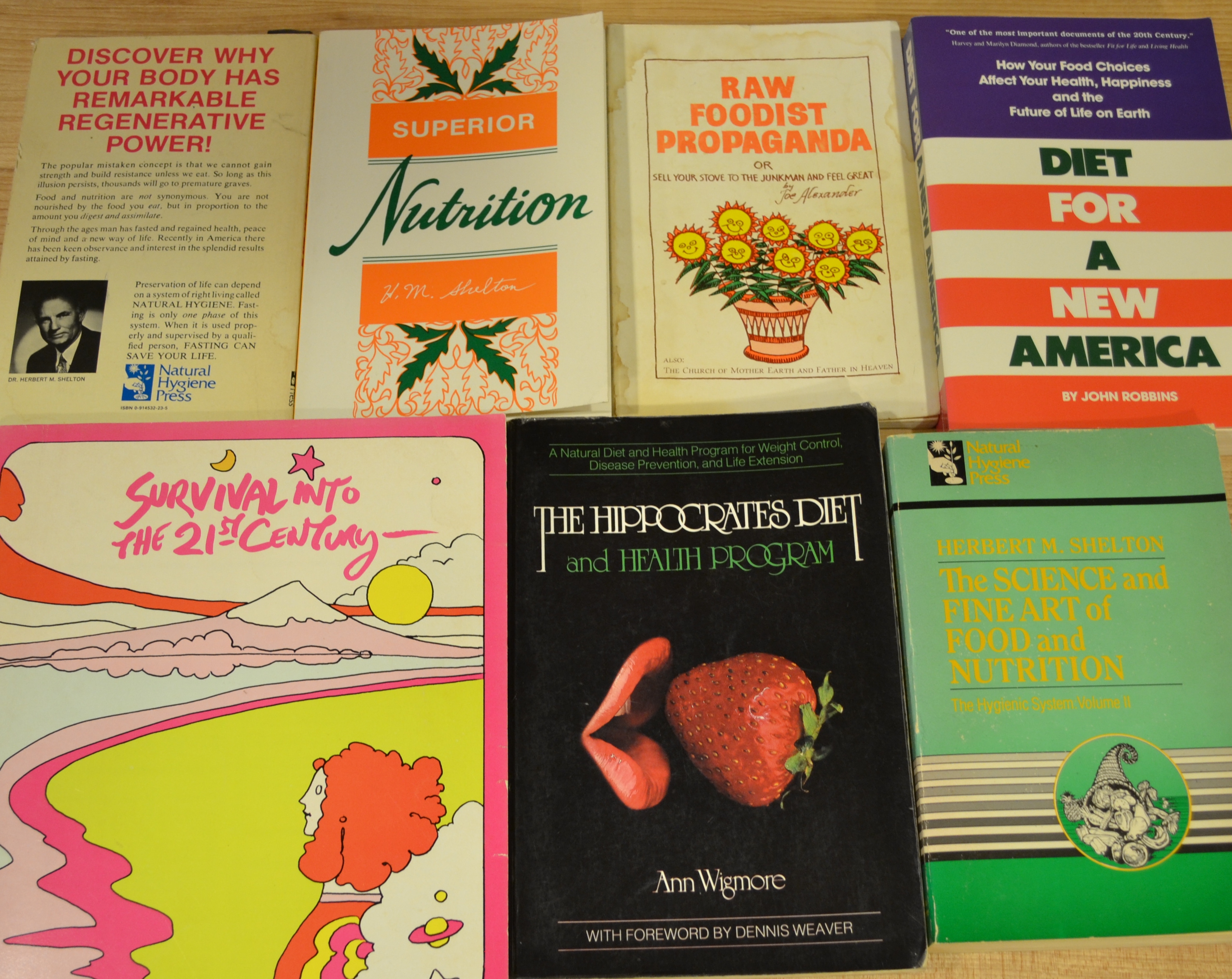
2015 is my 25 year raw food anniversary. Back in 1990, when I first learned of raw food, I could not have imagined the impact that it would have on my future life. In the beginning, I was naturally skeptical and thought that eating this way was a little extreme. Nonetheless, out of curiosity, I gave raw food a try and was surprised with the results. As my energy increased and my general health and well-being improved, my skepticism began to melt away. Looking back, I remember how I imagined the potential of raw plant food making a difference in people’s lives. I envisioned a time and place where raw food consciousness was more mainstream and that I would one day teach this valuable information to enthusiastic groups of students. Well, with a lot of work and dedication those dreams did come true and I am just as excited about raw food today as back then, with that early enthusiasm positively tempered by experience, research, and education.
The raw food world was a much smaller place back in 1990 as there weren’t nearly as many raw food resources as there are today. Back then there were a small number of raw food books and teachers, and I only knew a handful of raw food enthusiasts. This term is well-chosen since those that I knew were definitely enthused. The internet was not as we know it today and there was no social media. Finding information on raw food and plant-based diets was a bit of an adventure, and I was always happy to find books on the subject that most people would now consider classics. Given the few resources available, a lot of what I learned in those early days was through experience, and I ‘experienced’ many bumps and potholes along the way. There are so many things that I wish that someone had told me when I started with raw food back then. So here I will share with you the top five pieces of information that had I known, would have made my raw food journey smoother. I am hoping they can be of use to you:
#1: Move at your own pace. When I became interested in raw food, most of the literature I read and my social influences suggested that I had to be 100% raw right away. Transitioning was not really discussed, so I did not really see it as an option at first. Raw food seemed like an all or nothing proposition. But, I was honest with myself about what was achievable at that time. I found that I needed some time to become familiar with foods that were available in my area and how to prepare them. At the time, I was living in New England and it was winter. The fruits available were bananas, oranges, apples, pears, grapes, dried papaya spears, raisins, and a few other choices. Available leafy greens included three different types of lettuce, spinach, and other greens that I had never tried, like kale. I had a low-power blender that I used to make “smoothies” that were more lumpy than smooth. A super-enthused raw friend of mine used to call my smoothies “chunkies”.
These and other day to day considerations that one needs to address when getting started with raw food became part of my own self-stylized transition that progressed as I became more educated. Another fellow raw food enthusiast from those days went 100% raw overnight, saying that she would never eat anything cooked ever again. This lasted three months, and shortly thereafter she lost interest in healthy eating because maintaining 100% raw was too restrictive for her. All too often I see people leave raw food discouraged for this same reason.
Where am I now? Currently, I am somewhere between 90 and 100% raw and this percentage has varied over the years, depending on my situation. Percentages differ per person and I encourage you to find the percentage that works best for you. The most successful long-term raw food enthusiasts understand this idea and tend to be flexible with their approach depending on their personal needs and situation. What dietary approach gives you the results you are looking for and is sustainable right now? What approach will be sustainable long term? I have found that research, experience, and education combined were the best training, and the approach that worked best for me revealed itself in time.
#2: Gather much information from multiple points of view and sources. It is important to consider information from other points of view than your own because you may learn information not acquired if you were only looking for information supporting your current paradigm. Searching for information that supports your current point of view is referred to as confirmation bias. I have been using this term and discussing this idea in our Science of Raw Food Nutrition series of classes for years, because I think that awareness of this tendency is so important. Countless times I have learned valuable information from people with a differing point of view, and that information has made a difference in my health, my thinking, and other aspects of my life.
While we are on the subject of information, when I began my raw food journey 25 years ago, I had so many questions, most of which were not answered in the raw food literature available at the time. I was looking for more concrete answers than these books provided, so I decided that I would one day write a book that answered these questions to make the raw food journey easier for people who came after me. This book is the Raw Food Nutrition Handbook: An Essential Guide to Understanding Raw Food Diets. In this book, Dr. Rick and I cover the “where do you get your” questions, like where do you get your protein, B12, vitamin D, omega 3 fats and more. We provide updated research-based information on classic raw food topics like enzymes, food combining, and raw plant sources of important vitamins and minerals. We also discuss the different approaches to raw food and how raw food diets compare nutritionally to other dietary approaches, and much more.
#3: Know your source. Some raw food enthusiasts tend to follow one particular person’s point of view. I encourage you to educate yourself on a variety of points of view. One of the reasons why is because we all have different experiences and no one person can know everything about a subject. Very often, I have seen raw food educators change their approach as they learn more. The theme here is that we are all learning, even those of us who have been on this path for many years. The more that I learn about nutrition and how the body works, the more I realize how much I have yet to learn. Even after 25 years, I find myself asking questions and seeking answers. When the need arises, I encourage people to consult with a knowledgeable licensed healthcare provider to help with making important health-related decisions.
#4: Use critical thinking, be selectively open-minded, and enjoy the process. Critical thinking involves gathering as much information as possible about a subject, and making a decision based on that information while remaining open-minded to other information that may be learned in the future. As stated earlier, countless times I have discovered information that changed my point of view for the better. I think of researching as an ongoing and enjoyable opportunity to improve the quality of life for people in my life.
#5: Make changes if or when necessary. Here is my classic example: My introduction to raw food in 1990 was the natural hygiene approach. Nowadays, people commonly refer to this approach as various versions of LFRV, HCRV, etc. This approach worked very well for me for a while but as time went on, I refined my approach. The information I learned and the refinements and changes I made ultimately gave me the health results I was seeking.
Bonus #6: Surround yourself with a supportive community. As a long term raw food enthusiast, author, clinician, and educator, I have learned much on this path and sincerely hope this information can be of use to you. There is still much more that I have to share with you, which is why I have this blog, our YouTube channels, our book, and our classes, so I encourage you to check out these resources.
And if you are wondering, the super-enthused raw friend that used to call my smoothies “chunkies” is now my husband, Dr. Rick Dina. Back when we got started with healthy eating, our support system was our group of friends which made all the difference in that we helped each other to stay on track, shared our experiences and research, discussed changes and refinements, challenged raw food dogma, and had a lot of fun! We wish you the best in your journey and invite you to share in ours.
One of the best ways to keep in touch with us is to join our email list. You’ll receive a free copy of Our Top 12 Strategies for Long Term Success on A Raw Plant-Based Diet eBook along with regular information about raw food and plant-based diets and periodic promotions for our classes, events, and other offerings!
What do fruits and vegetables have in common with fall foliage?
One answer is very simple: antioxidants. Xanthophylls and carotenoids are two types of antioxidants found in fruits, vegetables, and fall foliage.
Regarding fruits and vegetables, xanthophylls are yellow plant pigments found in these foods and leafy greens. Well-known xanthophylls include lutein and zeaxanthin which have been studied for potential benefits in human vision. Carotenoids are orange plant pigments found in some leafy greens and orange fruits and vegetables. Well-known carotenoids include beta carotene and alpha carotene.
Regarding leaves on trees, xanthophylls and carotenoids are present in leaves for the entire life cycle and are only revealed when chlorophyll production ceases toward the end of this cycle, which happens on a large scale in the fall. Chlorophyll is a green pigment that plays a role in creating energy for green plants from sunlight through a process called photosynthesis. Chlorophyll breaks down with exposure to sunlight throughout the life cycle of leaves and therefore constantly has to be replaced. As autumn approaches and a leaf approaches the end of its life, chlorophyll is no longer replaced by the plant, revealing the xanthophylls and/or carotenoids underneath.
In addition to yellow and orange pigments, we see red pigments called anthocyanins in some fall foliage. Other anthocyanins are purple and blue in color and are found in blueberries, raspberries, and blackberries. In contrast to xanthophylls and carotenoids, anthocyanins are not present throughout the life of the leaf, but instead are made at the end of the life cycle when chlorophyll production ceases. Not all leaves contain anthocyanins.
To summarize, xanthophylls, carotenoids, and anthocyanins are groups of antioxidants found in both fall foliage and fruits and vegetables. All three types of phytonutrients help protect the leaves of trees from stresses such as constant sun exposure which can generate free radicals. This is especially true for xanthophylls and carotenoids as they are present for the entire life cycle of the leaf. Similarly, the xanthophylls, carotenoids, and anthocyanins we eat from fruits and vegetables are thought to help protect our internal tissues from the free radicals to which they are exposed.
What about the brown pigment seen in some fall foliage? This pigment is called tannin and is revealed when chlorophyll, xanthophylls, carotenoids, and anthocyanins break down near the end of the leaf life cycle.
Interested in taking your nutrition knowledge to the next level?
We cover this topic and so much more in our online Mastering Raw Food Nutrition and Educator Course. For more class details, click here.
Additionally, our book The Raw Food Nutrition Handbook: An Essential Guide to Understanding Raw Food Diets addresses many hot topics in raw food nutrition such as essential fats, protein, nutrient content of raw food diets, food combining, enzymes, hydration, vitamins, minerals, and many more. We value education on these important topics and are happy to finally bring this book to you. The book is available on Amazon and other online booksellers.
One of the best ways to keep in touch with us is to join our email list. You’ll receive a free copy of Our Top 12 Strategies for Long Term Success on A Raw Plant-Based Diet eBook along with regular information about raw food and plant-based diets and periodic promotions for our classes, events, and other offerings!
Gluten in Foods: Common and Uncommon Knowledge
Gluten is a popular and controversial topic for a number of reasons, with very strong voices on all sides of the conversation. Being a clinician, I always have the interest of the individual in mind given that the achievement of personal health is the ultimate goal. To this end, I am constantly looking for reliable information grounded in reliable biochemistry, physiology, research, and clinical experience to help people reach their health goals, especially since much of the most compelling information is not common knowledge. There are many simple facts that are well understood about gluten which are often perpetuated in the media, but there are some important pieces of the gluten puzzle not popularly known or well understood. For the past couple of years, I have been hearing from students and other people with gluten-related health challenges that their gluten free diet was not getting them the results they were expecting. On closer inspection and with some recent research, I learned some fascinating information that I will cover in this article. But for now, let’s start with:
The basics
Foods that contain gluten are found in one plant family, the grain family, also known as the grass family. The scientific name for this family is the Poaceae. Often people may think that grains and grasses are in separate plant families, when in fact they are in the same plant family.
Although gluten is found only in grains, not all members of the grain family contain gluten. Currently, wheat, rye, barley, triticale, spelt, and kamut are the grain family members considered to contain true gluten. These foods, or foods that contain these foods as ingredients, such as certain processed or prepared foods, contain true gluten. Processed foods can often hide gluten-containing ingredients in them, so it’s important to read labels. Despite these grains being identified as containing gluten, there has been some concern about the gluten-free status of other members of the grain family. A 2009 study showed that a percentage of compliant people with celiac disease (gluten intolerance) on a gluten free diet still did not get the results they were seeking in terms of symptom reversal and lab test results. One of the possibilities considered by the researchers was cross contamination of their diet with gluten containing grains. Another concern raised was the consumption of other members of the grain family that contain proteins which resemble gluten.
The controversy
There are several perceived gluten free grains that are currently under investigation and information on them is growing, but for our purposes, we will focus on oats and corn, two of the most popularly consumed gluten free grains. Oats are a popular breakfast food and corn is commonly found in many forms in processed and prepared foods.
Many sources consider oats to be gluten free, but there are some challenges with them. Oats can sometimes be processed in facilities that may also process gluten containing grains, so there may be some cross contamination between these other grains and oats. Another consideration is avenin, a protein found in oats that is biochemically similar to gluten. Some people who are sensitive to gluten may have a similar experience with oats for this reason. Recent research indicates there is a wide range of variation in potential effects that different cultivated varieties of oats can have on gluten intolerant individuals. This means that some varieties of oats may have notable effects while others may have less of an effect.
Corn is also a member of the grain family, and like oats, is considered to be gluten free by many sources. However, corn contains zein; a protein that is biochemically similar to gluten and is often referred to as “corn gluten.” A study published in 2013 indicated that some gluten intolerant individuals may have symptoms and lab test results consistent with the ingestion of gluten containing grains despite adherence to a gluten free diet. Corn consumption by these individuals was cited as being a possible reason for this outcome. The researchers also noted that even though a gluten intolerant individual may not experience overt symptoms from eating corn, there may still be small intestine effects that can be identified through laboratory testing.
At this time, more research is needed to fully understand the gluten status of oats, corn, and other members of the grain family. In the meantime, there are plenty of foods that do not contain gluten or gluten-like proteins. For example, foods commonly consumed on a raw plant based diet such as fruits, vegetables, sea vegetables, nuts, and seeds are not members of the grain family and therefore do not contain gluten. Although anything that can germinate (including grains) is botanically considered a “seed,” commonly understood seeds such as chia, sesame, pumpkin, sunflower, hemp, flax, and poppy seeds do not contain gluten.
Quinoa and amaranth are often mistaken for grains, but they are not members of the grain family. They are members of the amaranth plant family (Amaranthaceae), and do not contain gluten. Amaranth and quinoa are often referred to as pseudograins or pseudocereals, because of their resemblance to true grains.
The Bottom Line
The good news is that if one is eating a whole food plant based diet that does not contain members of the grain family (Poaceae), they are consuming a diet free of gluten. Gluten is an area of nutrition with ongoing investigation. Sometimes it takes a while for this research to reach the general population, so my goal here is to provide tools of exploration for people who are seeking their greatest health potential. In our Science of Raw Food Nutrition series of classes that we teach at Living Light, we cover gluten and other popular cutting edge raw food and nutrition related topics to assist you in achieving your health goals.
If you're interested in taking your knowledge to the next level.........
We cover this topic and so much more in our online Mastering Raw Food Nutrition and Educator Course. For more class details, click here.
Additionally, our book The Raw Food Nutrition Handbook: An Essential Guide to Understanding Raw Food Diets addresses many hot topics in raw food nutrition such as essential fats, protein, nutrient content of raw food diets, food combining, enzymes, hydration, vitamins, minerals, and many more. We value education on these important topics and are happy to finally bring this book to you. The book is available on Amazon and other online booksellers.
One of the best ways to keep in touch with us is to join our email list. You’ll receive a free copy of Our Top 12 Strategies for Long Term Success on A Raw Plant-Based Diet eBook along with regular information about raw food and plant-based diets and periodic promotions for our classes, events, and other offerings!
References:
Fric P, Gabrovska D, Nevoral J. Celiac disease, gluten-free diet, and oats. Nutr Rev. 2011 Feb;69(2):107-15.
Lanzini A, Lanzarotto F, Villanacci V, Mora A, Bertolazzi S, Turini D, Carella G, Malagoli A, Ferrante G, Cesana BM, Ricci C. Complete recovery of intestinal mucosa occurs very rarely in adult coeliac patients despite adherence to gluten-free diet. Aliment Pharmacol Ther. 2009 Jun 15;29(12):1299-308.
Maglio M, Mazzarella G, Barone MV, Gianfrani C, Pogna N, Gazza L, Stefanile R, Camarca A, Colicchio B, Nanayakkara M, Miele E, Iaquinto G, Giardullo N, Maurano F, Santoro P, Troncone R, Auricchio S. Immunogenicity of two oat varieties, in relation to their safety for celiac patients. Scand J Gastroenterol. 2011 Oct;46(10):1194-205.
Ortiz-Sánchez JP, Cabrera-Chávez F, de la Barca AM. Maize prolamins could induce a gluten-like cellular immune response in some celiac disease patients. Nutrients. 2013 Oct 21;5(10):4174-83.
Silano M, Pozo EP, Uberti F, Manferdelli S, Del Pinto T, Felli C, Budelli A, Vincentini O, Restani P. Diversity of oat varieties in eliciting the early inflammatory events in celiac disease. Eur J Nutr. 2014 Aug;53(5):1177-86.
Real A, Comino I, de Lorenzo L, Merchán F, Gil-Humanes J, Giménez MJ, López-Casado MÁ, Torres MI, Cebolla Á, Sousa C, Barro F, Pistón F. Molecular and immunological characterization of gluten proteins isolated from oat cultivars that differ in toxicity for celiac disease. PLoS One. 2012;7(12):e48365.
How I Went From Avoiding Fruit to Loving It – The Food Combining Difference
I am a huge fan of education. This makes sense, given that I teach a class called the Science of Raw Food Nutrition, read lots of research articles, and write quite a bit on the subject of raw food. So, it likely comes as no surprise that I often encounter misperceptions about raw food topics, especially from people eating a standard western diet and even from people eating a raw plant-based diet. Often times these misunderstandings are based on one’s particular personal experience.
Here is a great example:
Last week, Rick and I purchased two 35# cases of cantaloupe at our local organic wholesale produce market for under $10 each; an amazing deal for such a large amount of food. I spoke to a relative about our recent find and their response was along the lines of: “How on earth are you two going to eat all of that and why would you want to since fruit doesn’t have much nutrition anyway?” This observation brings up a couple of interesting points of how fruit is generally perceived.
Perception #1: Too much fruit
Before I became interested in raw food 25 years ago, I thought of fruit as being a dessert, condiment, or decoration for the top of my cereal. I did not particularly like fruit when growing up because invariably I would get an upset stomach almost every time I ate it, which was enough to keep me away. When I learned about raw food diets that included a notable amount of fruit, my initial thought was eating this way is not possible, given how I felt after eating even small amounts. At the time, I was looking for a solution to a health challenge, so I was willing to explore my options. If it weren’t for this health challenge I would not have been inspired to make such large changes to my diet. I reluctantly gave eating more fruit a try and was surprised at how good I felt. What was the difference? Placebo? Was I so desperate to feel better that I wished myself into feeling better after eating fruit? Well, not really. I was hoping that raw food would not make a difference in my health because it seemed so different from the norm, or more specifically my norm. Raw food eating may seem a bit eccentric to most people now, but imagine how it was perceived back in 1990 when I was getting started. Much to my chagrin, raw food did make a big difference for me health-wise and my perception of it was radically changed. My attitude changed to gratitude with the health results I experienced.
So, why did fruit work for me digestion-wise when previously it had not? I’m sure that many of you can guess the answer. The fact is, before going raw I was eating fruit either as a dessert or on top of other heavier foods, and that did not work well for my digestion. From my own personal experience, the principle of eating fruits away from other foods for improved digestion has worked well. In fact, this aspect of food combining was really a revelation, since I was actually able to start enjoying fruit without digestive distress for the first time in my life. Fruit is no longer a dessert, instead it now plays an important role in my diet. In my book, the Raw Food Nutrition Handbook: An Essential Guide to Understanding Raw Food Diets, I give an updated perspective on the topic of food combining based on reliable research and digestive physiology.
Perception #2: Fruit is low in nutrients
Another misperception is that fruit doesn’t have very much of any important nutrients, other than carbohydrates. I can understand this thought, because when one considers how much fruit the average person eats in one sitting, it is usually a small amount accompanying other foods as it was for me. The amount of fruit I have seen raw food enthusiasts eat in one sitting, especially the very active ones, is often inconceivable to most standard western eaters or even many health conscious people. When one sees fruit as being a meal rather than a dessert or condiment, then the nutrients one can get from fruit increase as portion sizes increase. For example, here is a sampling of the nutrients found in one medium-sized cantaloupe:
| Cantaloupe, one medium, 552 g | Adult DRI | |
| Calories | 188 | |
| Beta carotene (mcg) | 11,150 | |
| Vitamin A (RAE – Retinol Activity Equivalent) | 933 | 700 mcg for women, 900 mcg for men |
| Vitamin B3 (Niacin) (mg) | 4.1 | 14 mg for women, 16 mg for men |
| Vitamin B9 (Folate) (mcg) | 116 | 400 mg for men and women |
| Calcium (mg) | 50 | 1000 mg for women up to and including 50 years and men up to and including 70 years, 1200 mg for women over 50 and men over 70 |
| Iron (mg) | 1.2 | 8 mg for men and postmenopausal women, 18 mg for premenopausal women |
| Magnesium (mg) | 66 | 310 – 320 mg for women, 400 – 420 mg for men |
| Zinc (mg) | 1.0 | 8 mg for women, 11 mg for men |
Rick and I each easily eat this amount of cantaloupe in one sitting, often with other fruit added. When eaten in quantity, fruit can be a strong source of many important nutrients. As we see here, cantaloupe is a great source of beta-carotene as exemplified by its rich orange color. How much of this beta-carotene is converted to vitamin A? Check out my video for an explanation. The calcium, iron, and zinc content of cantaloupe is surprising. How many times have I heard people say that fruit is low in minerals? Often times this may be true, but the reality is that it depends on the fruit and how much one is eating. I have some good videos on this topic, as well.
Regarding the consumption of cantaloupe and other melons, do I “eat them alone or leave them alone” as espoused by food combining adherents? No, I often eat cantaloupe in smoothies with other fruits and even leafy greens. My digestion is just fine. The most important point to remember with food combining principles is that they are a good starting point, and not necessarily to be taken as dogma. From these guidelines one can determine which works best for them personally. While I don’t follow all of the principles, I am happy that they do exist because without them, I might still be thinking of fruit as a dessert and unnecessarily avoiding it.
Here is a surprisingly flavorful and simple recipe that I recently made with cantaloupe from our produce haul:
Simple Cantaloupe Banana Smoothie
Flesh of one medium cantaloupe
Approximately three medium frozen bananas, cut into pieces
Scoop the cantaloupe flesh into a blender and blend until smooth. Then add the bananas and blend again until smooth and thick. More bananas will result in a thicker smoothie.
Pour into a glass or bowl and optionally garnish with mint.
Enjoy!
One of the best ways to keep in touch with us is to join our email list. You’ll receive a free copy of Our Top 12 Strategies for Long Term Success on A Raw Plant-Based Diet eBook along with regular information about raw food and plant-based diets and periodic promotions for our classes, events, and other offerings!
We love watermelon, but what about the seeds?
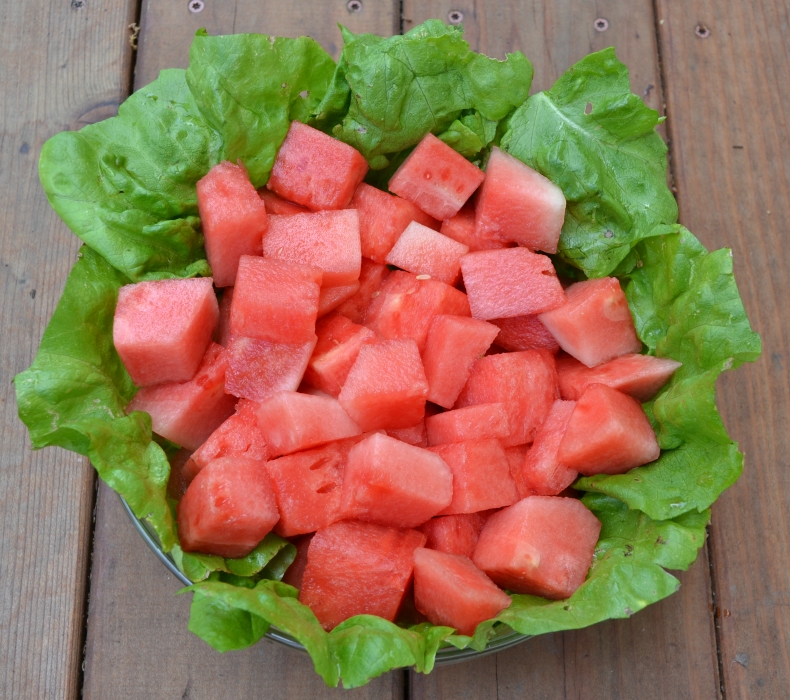 Watermelon season is here! For me, watermelon is totally synonymous with summer fun and enjoying it often brings me to another time and place. My childhood memories of watermelon-soaked backyard gatherings, pool parties, and beach parties abound. In fact, I am eating a watermelon as I am writing this!
Watermelon season is here! For me, watermelon is totally synonymous with summer fun and enjoying it often brings me to another time and place. My childhood memories of watermelon-soaked backyard gatherings, pool parties, and beach parties abound. In fact, I am eating a watermelon as I am writing this!
When I became interested in raw food 25 years ago, watermelon became an actual food for me, rather than a dessert. And just like at summer gatherings, back then I would remove the seeds from the watermelon before eating. Ever heard that old wives' tale that if you eat watermelon seeds they will sprout in your body? Well, we all know that doesn’t happen, but I did grow up thinking watermelon seeds were to be removed before eating the melon.
It wasn’t until college that I learned that those little white watermelon seeds were actually edible. Watermelon is in the cucumber plant family (Cucurbitaceae), along with summer squash, zucchini, winter squash varieties, pumpkin, and other melons such as honeydew and cantaloupe. Pumpkin seeds are famous for their zinc content, so what about watermelon seeds?
Two tablespoons of shelled dry watermelon seeds contain 1.4 mg of zinc, along with 1 mg of iron, 70 mg of magnesium, and more. For only 75 calories, the iron, zinc, and magnesium content of these seeds is excellent. When compared to a similar measure of pumpkin seeds, the zinc content is similar.
| Watermelon seeds – Two tablespoons | Pumpkin seeds – Two tablespoons | Adult DRI | |
| Calories | 75 | 93 | |
| Magnesium | 70 | 92 | 310 – 320 mg for women, 400 – 420 mg for men |
| Iron | 1.0 | 2.6 | 8 mg for men and postmenopausal women, 18 mg for premenopausal women |
| Zinc | 1.4 | 1.3 | 8 mg for women, 11 mg for men |
Most watermelons these days are seedless, but now when I come across the occasional white seed, I eat it along with the watermelon flesh. I do not eat the black seeds largely because I rarely find them. When I do find them, I compost them simply because I do not enjoy their flavor.
What about watermelon itself? Isn’t it controversial for some reason?
To make it easy for people to find reliable information on watermelon and other fruits, the glycemic index, glycemic load, fructose, glucose, and carbohydrates in general, we dedicated a chapter in our book, The Raw Food Nutrition Handbook: An Essential Guide to Understanding Raw Food Diets to answering many common carbohydrate questions.
In the book we also cover other hot topics in raw food nutrition such as essential fats, protein, nutrient content of raw food diets, food combining, enzymes, hydration, vitamins, minerals, and many more. We value education on these important topics and are happy to finally bring this book to you. The book is available on Amazon and other online booksellers.
One of the best ways to keep in touch with us is to join our email list. You’ll receive a free copy of Our Top 12 Strategies for Long Term Success on A Raw Plant-Based Diet eBook along with regular information about raw food and plant-based diets and periodic promotions for our classes, events, and other offerings!
The Green Difference – Five Reasons why Leafy Greens are Important on a Raw Food Diet
Ever since my introduction to raw food 25 years ago, I noticed that there are at any given time a number of raw food enthusiasts who choose to limit their intake of vegetables, especially leafy greens, for various reasons. From my own research, clinical and personal experience, I have found that leaving out these important foods decreases the amounts of important nutrients in one’s diet.
In a recent video I show the content of selected important nutrients in three different smoothies: a fruit smoothie, the same fruit smoothie with dandelion greens added, and the same fruit smoothie with kale added. The nutrient differences between the non-green smoothie and the green smoothies are astonishing, especially for calcium and iron. Here is a chart summarizing the differences:
| Fruit Smoothie | Fruit smoothie plus dandelion greens | Fruit smoothie plus kale | DRI | |
| Calories | 436 | 510 | 536 | |
| Calcium | 110 | 418 | 381 | 1000 mg, 1200 mg |
| Iron | 2.0 | 7.0 | 5.4 | 8 mg, 18 mg |
| Magnesium | 118 | 177 | 136 | 310 mg, 420 mg |
| Potassium | 1484 | 2139 | 2382 | 4700 mg |
| Folate | 157 | 202 | 216 | 400 mcg |
Fruit smoothie recipe:
- One Valencia orange
- Two bananas
- 2 cups pineapple chunks
- ½ cup blueberries
- ½ cup strawberries
- ¼ cup blackberries
Fruit smoothie plus dandelion greens: the ingredients in fruit smoothie with 3 cups of dandelion greens added
Fruit smoothie plus kale: the ingredients in fruit smoothie with 3 cups of chopped kale added
Calcium and Iron: The dandelion greens and kale increase the content of all nutrients listed in the table significantly, especially iron and calcium. The amounts of calcium and iron in the fruit smoothie alone are a good start, but when leafy greens are added, the amounts of these important minerals increase dramatically. Per calorie, the green smoothies are a great value calcium and iron-wise and go a long way in helping to provide the adult DRIs (Dietary Referenced Intakes) for these important nutrients. Without leafy greens, one would be missing out on these nutrients and the health value they provide.
Magnesium: Leafy greens are a reliable source of magnesium because of their chlorophyll content. Chlorophyll is the green coloring that one finds green plants, especially in leaves. The mineral at the center of the chlorophyll molecule is magnesium, so it is not surprising to see that the magnesium content of this smoothie notably increased when leafy greens were added.
Folate: Also known as vitamin B9, folate got its name from the Latin word for foliage, which makes sense given that some strong sources of folate are leafy greens. As evidenced in the table above, adding leafy greens to one’s diet can increase folate intake in many cases significantly. Folate is critical for cell division and DNA replication along with vitamin B12, and has a synergistic relationship with vitamin B12. For clarification of this relationship please see my previous blog post and video on folate and vitamin B12.
Potassium: Fruit is known as a great source of potassium and leafy greens can contain a notable amount of this important alkaline mineral, as the table above indicates.
Many more: There are so many more important nutrients found in leafy greens that we talk about in our book, the Raw Food Nutrition Handbook: An Essential Guide to Understanding Raw Food Diets. Some of these nutrients include the essential omega-3 fat alpha-linolenic acid, carotenoids lutein and zeaxanthin, protein, vitamins C and E, and many more. Many of these important nutrients work together synergistically to create an effect that is greater than the sum of the individual nutrients, so getting them from a whole food source is important. But if we don’t eat the food, we don’t get the nutrients. I see leafy greens and vegetables in general as playing a necessary role in a healthy raw food plant-based diet.
Video summarizing the points covered in this article:
One of the best ways to keep in touch with us is to join our email list. You’ll receive a free copy of Our Top 12 Strategies for Long Term Success on A Raw Plant-Based Diet eBook along with regular information about raw food and plant-based diets and periodic promotions for our classes, events, and other offerings!
The Best Kept Secret about Apricots
While on a 6-mile run yesterday, I found several different types of fruit trees with developing fruits, one of which was an apricot tree. Since it is June, the fruits are still small and green, but later this summer this tree will be packed with beautiful, orange, ripe apricots!
People often think of fruit as being low in important minerals, but what I have found from my research tells a different story. It is important to look at individual fruits and their mineral content before jumping to conclusions. For example, 15 pitted apricots have 70 mg of calcium and 2 mg of iron. It is not unusual for raw food enthusiasts to consume this amount of fruit or more in one sitting, so when considering the daily values, apricots when eaten in quantity can potentially provide a significant amount of these two important minerals.
Apricots, like other fruits such as bananas and dates, are not surprisingly a great source of potassium and 15 pitted apricots contain 1360 mg. For 252 calories worth of food, the amounts of these important minerals can make a great contribution to our daily needs.
| Apricots – 15 pitted | Adult DRI | |
| Calories | 252 | |
| Calcium | 70 mg | 1000 – 1200 mg |
| Iron | 2 mg | 8 mg for men and postmenopausal women18 mg for premenopausal women |
| Potassium | 1360 mg | 4700 mg |
Apricots in-training
________________________________________________________________
One of the best ways to keep in touch with us is to join our email list. You’ll receive a free copy of Our Top 12 Strategies for Long Term Success on A Raw Plant-Based Diet eBook along with regular information about raw food and plant-based diets and periodic promotions for our classes, events, and other offerings!
Unprecedented: 2015 Dietary Guidelines Advisory Committee Recommendations Reflect BOTH Health AND Environmental Sustainability Concerns
Every 5 years the USDA and US Department of Health and Human Services publish updated dietary guidelines for the American public based on recommendations from the Dietary Guidelines Advisory Committee.
The Dietary Guidelines Advisory Committee (DGAC) is responsible for providing the US Federal government with current research-based evidence on diet, health, and nutrition, in a document titled the Scientific Report of the 2015 Dietary Guidelines Advisory Committee. From this report, the Federal government develops the Dietary Guidelines for Americans 2015, which will be released later this year.
For the first time in history, the DGAC has suggested that ‘health, dietary guidance, and the environment’ be considered in dietary choices and encourages people to focus their diet on whole natural plant foods including vegetables, fruit, nuts, seeds, legumes, etc. The committee especially emphasized the importance of the inclusion of vegetables and fruit in a healthy diet, which make up one-half of the current USDA MyPlate graphic.
The DGAC considers healthy plant-based diets to be more nutritious and of lower ‘environmental impact in terms of greenhouse gas emissions, land use, water use, and energy use’ than the average US diet. The committee acknowledges an overlap between health-promoting plant-based diets and reduced environmental impact. This connection has been a topic of discussion for many years in health circles, and now more than ever has become an especially timely topic given the current drought situation in many of the US western states, including California, where much of the food in the United States is grown.
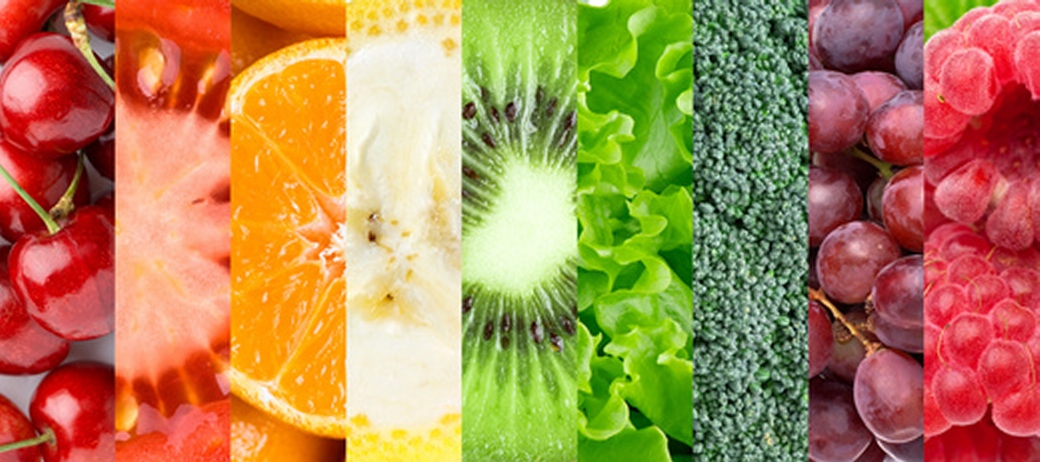
The committee recognizes that access to food is a major consideration and that ‘a sustainable diet ensures this access for both the current population and future generations.’ It is good to see that research-based strategies for producing enough food to feed our growing population healthfully and sustainably are beginning to get the attention of US policy makers. Intake of animal-based foods in the US is currently higher than the suggested plant-focused dietary patterns suggested by the committee. The committee is not necessarily asking people to completely give up any particular type of food, but rather to have a dietary emphasis on whole plant foods for both health and sustainability reasons.
It will be interesting to see the extent to which these plant-focused recommendations by the DGAC are reflected in the final Dietary Guidelines for Americans 2015. Regardless of the special interests that may have influence over the final document, I am happy to see that the DGAC makes their recommendations based on sound research and recognizes that the most health promoting diet is also the most environmentally sustainable. I am also pleased to see that the suggestions advocated by the committee are more aligned than ever with the information we teach in our online Mastering Raw Food Nutrition and Educator Course. For more class details, click here.
References and Research
Scientific Report of the 2015 Dietary Guidelines Advisory Committee:
http://www.health.gov/dietaryguidelines/2015-scientific-report/02-executive-summary.asp
http://www.health.gov/dietaryguidelines/2015-scientific-report/
One of the best ways to keep in touch with us is to join our email list. You’ll receive a free copy of Our Top 12 Strategies for Long Term Success on A Raw Plant-Based Diet eBook along with regular information about raw food and plant-based diets and periodic promotions for our classes, events, and other offerings!
5 Great Reasons to Add More Fruits and Vegetables to Your Diet
Raw fruits and vegetables are well-known for their health promoting benefits, so much that the current USDA MyPlate suggests that half of our diet be composed of fruits and vegetables. Here are many of the reasons why:
Vitamins
Fruits and vegetables contain many important and synergistic vitamins. Good examples include vitamins C and E. Many fruits and vegetables are excellent sources of vitamin C, including red bell peppers, strawberries, broccoli, cauliflower, papaya, lemons, tomatoes, cantaloupe, and of course, oranges. Leafy greens are rich in both vitamin C and vitamin E, and great sources include romaine lettuce, kale, mustard greens, dandelion greens, and collard greens.
Minerals
Bananas are famous for their potassium content, but fruits in general are great potassium sources. Dates, durian, apricots, honeydew melon, tangerines, oranges, peaches, nectarines, and mangoes are especially high in potassium.
Where do you get your calcium? Where do you get your iron? Many leafy greens can be rich sources of these important minerals, including kale, bok choy, dandelion greens, and even lettuce when eaten in quantity. Three cups of kale or dandelion greens provide over one quarter of the daily value for calcium and notable amounts of iron. A little-known fact is that some fruits can be notable sources of these two minerals as well. For example, only two valencia oranges or 5 figs provide 10% of the daily value for calcium. When eaten in greater quantities than this, as many raw food enthusiasts do, the calcium content can really add up. In regard to iron, although not as rich as leafy greens, mulberries, blackberries, and raspberries when eaten in quantity can provide notable amounts of this important mineral.
Phytonutrients
Plant foods in their fresh, raw state contain numerous phytonutrients, many of which can act as antioxidants which help protect our cells from age accelerating free radicals. Anthocyanins are antioxidants found in blue or purple foods such as blueberries and blackberries. Isothiocyanates are antioxidants found in cabbage family plants, also known as cruciferous vegetables, including collard greens, kale, bok choy, broccoli and Napa cabbage. Lutein and zeaxanthin are yellow-colored antioxidants, and are believed to play a role in protecting the macula of our eyes from damage caused by sunlight-induced free radicals. Lutein and zeaxanthin are found in foods such as dark leafy greens and yellow-orange fruits and vegetables, such as summer squash. Additional rich food sources include kale, Swiss chard, collard greens, romaine lettuce, broccoli, red bell peppers, dandelion greens, and zucchini.
Water
Water is involved in many essential body processes and makes up a significant percentage of body weight. In some raw food menus where fruits and vegetables make up the majority of foods eaten, the water content can be close to a gallon (almost 4 liters) or more! By comparison, raw menus that focus on denser more dehydrated foods, nuts, seeds, or oils can be less than half of this amount. Standard western menus are generally lower still at about one third the quantity of a high fruit and vegetable menu, creating the need for additional water consumption to meet daily needs. Unlike plastic water bottles, fruits and vegetables provide an abundance of healthy water in biodegradable containers!
Fiber
Dietary fiber is the indigestible portion of plant matter that is often referred to as roughage. Fiber plays critically important roles in various aspects of intestinal health, blood sugar and cholesterol regulation, and other important health benefits. Fiber keeps food moving though the intestines. It can help carbohydrates be digested more slowly, which in turn helps to stabilize blood sugar levels. It can bind to excess cholesterol in the digestive tract, helping keep blood cholesterol levels at an appropriate level. Fiber also plays a very important role in maintaining the health of the all-important human microbiome, as it provides food for healthy probiotic bacteria.
And the list goes on…
This is just the beginning! There are so many other reasons to include more fruits and vegetables in one’s diet and we are happy to see that the USDA now emphasizes the importance of these foods to the American public more than ever before.
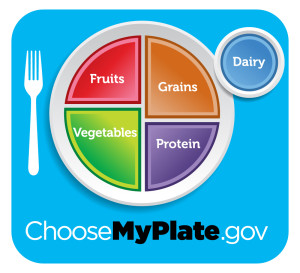
Posted in accordance with USDA MyPlate icon usage guidelines: The USDA does not endorse any products, services, or organizations.
One of the best ways to keep in touch with us is to join our email list. You’ll receive a free copy of Our Top 12 Strategies for Long Term Success on A Raw Plant-Based Diet eBook along with regular information about raw food and plant-based diets and periodic promotions for our classes, events, and other offerings!
How can folate mask a vitamin B12 deficiency?
This pathway is a little biochemically-intense, so I encourage you to watch the video first and then read the text below for clarification.
Vitamin B12 converts homocysteine to methionine by transferring methyl groups from 5-methyl tetrahydrofolate to homocysteine.
In a vitamin B12 deficiency, we often see elevated homocysteine levels, because vitamin B12 is not available to transform homocysteine into methionine. So, homocysteine levels increase.
In a vitamin B12 deficiency we can also see large red blood cells, referred to as macrocytic anemia, because vitamin B12 is not available to convert 5-methyl tetrahydrofolate back into folate. This is called the "methyl folate trap", where folate is "trapped" in the form of 5-methyl tetrahydrofolate. Folate is used to create red blood cells and DNA, and when there isn't enough folate available, red blood cells do not fully mature and stay large. On a lower folate diet, such as with many versions of the standard western diet, we tend to see this situation.
However, when someone with a vitamin B12 deficiency eats a higher folate diet, such as on a plant-based diet, there is a constant supply of folate to create red blood cells and DNA, so red blood cells may appear normal in size. This is how folate can mask a vitamin B12 deficiency. In other words, one needs look beyond the size of red blood cells when testing for vitamin B12 deficiency, and employ other reliable vitamin B12 tests. Accurate vitamin B12 testing by a knowledgeable, licensed clinician is essential for determining one's vitamin B12 status.
If you're interested in taking your knowledge to the next level.........
We cover this topic and so much more in our online Mastering Raw Food Nutrition and Educator Course. For more class details, click here.
One of the best ways to keep in touch with us is to join our email list. You’ll receive a free copy of Our Top 12 Strategies for Long Term Success on A Raw Plant-Based Diet eBook along with regular information about raw food and plant-based diets and periodic promotions for our classes, events, and other offerings!
What is methylmalonic acid and how does it relate to vitamin B12?
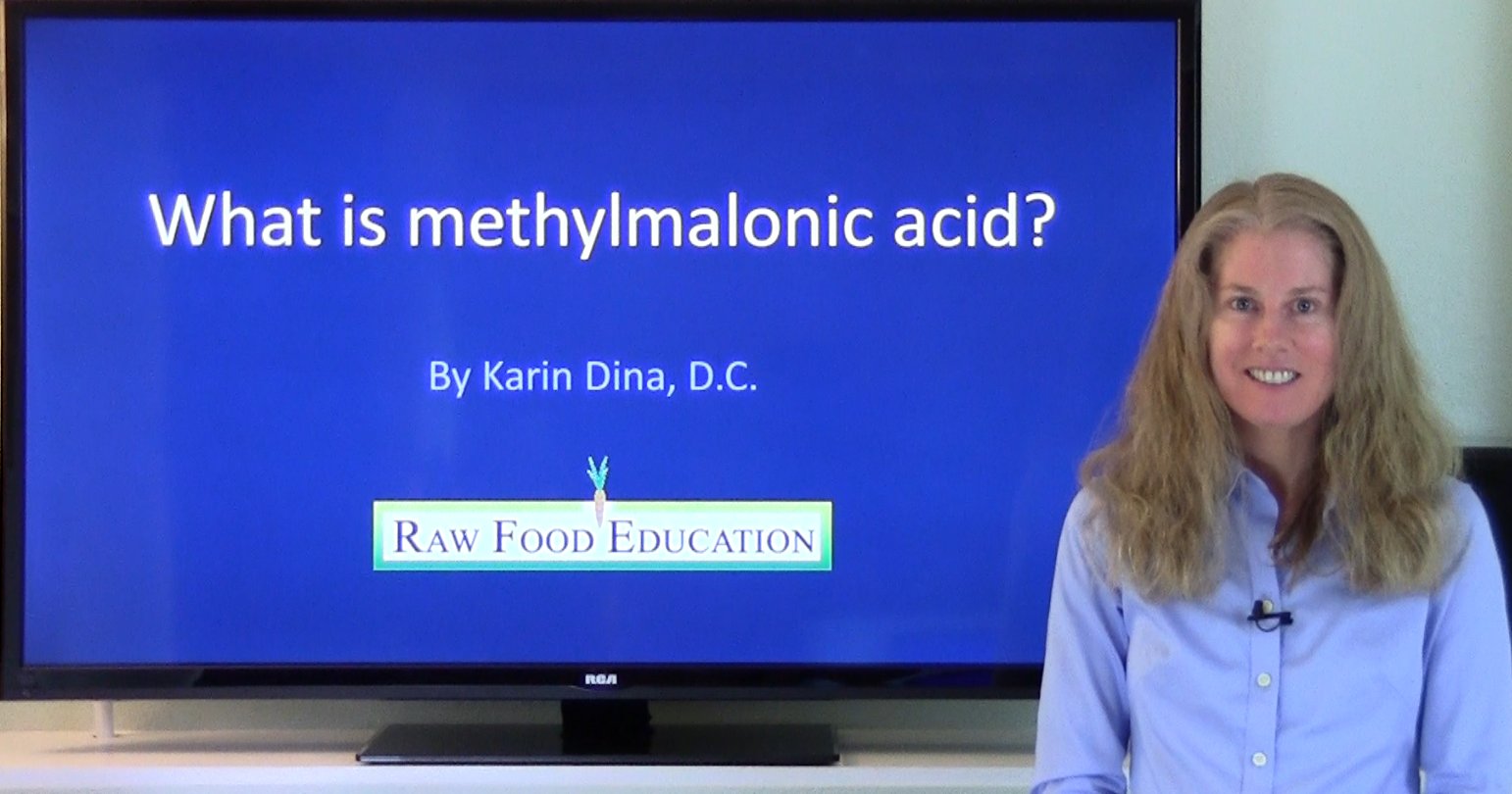 Methylmalonic acid (MMA) is a popular vitamin B12 test.
Methylmalonic acid (MMA) is a popular vitamin B12 test.
But what actually is MMA and where does it come from? In the human body, MMA is a breakdown product or byproduct of protein, carbohydrate, and cholesterol metabolism. In other words, when a variety of proteins, fatty acids, and cholesterol are used to create energy, one of the byproducts is methylmalonic acid.
The specifics of this energy producing pathway are described as follows: In the creation of energy, the amino acids valine, isoleucine, methionine, threonine, odd-chain fatty acids, and cholesterol all go through a variety of metabolic processes to be converted into a substance called propionyl CoA. Propionyl Co-A is then converted into methylmalonyl CoA. When we are in good human bioactive B12 status, methylmalonyl CoA is then converted into succinyl CoA by an enzymatic reaction in which vitamin B12 is a co-factor. In other words, vitamin B12 is essential for the conversion of methylmalonyl CoA into succinyl CoA.
Succinyl CoA is an intermediate in the Kreb’s Cycle (also known as the TCA cycle), which is involved in energy production. We now see how vitamin B12 plays a role in energy production in our body.
What happens when someone becomes B12 deficient? The pathway that converts methylmalonyl CoA into succinyl CoA becomes de-emphasized and the amount of methylmalonyl CoA starts to increase. As this amount increases, methylmalonyl CoA is converted into methylmalonic acid. Methylmalonic acid does not have any specific function in the body, so it is eliminated from the body by the urinary tract. When one is deficient in vitamin B12, their blood and urine generally have elevated levels of methylmalonic acid.
Vitamin B12 is very important for this pathway and many other reactions throughout the body. The bottom line is that it is a good idea to know our vitamin B12 status, which we can achieve through reliable B12 testing.
We cover the importance of vitamin B12, reliable testing, and reliable sources in our book, The Raw Food Nutrition Handbook, An Essential Guide to Understanding Raw Food Diets. If you are interested in our lab testing and nutrition consulting services, please visit www.rawfoodconsulting.com.
This video explains how and why methylmalonic acid can be created in the human body:
One of the best ways to keep in touch with us is to join our email list. You’ll receive a free copy of Our Top 12 Strategies for Long Term Success on A Raw Plant-Based Diet eBook along with regular information about raw food and plant-based diets and periodic promotions for our classes, events, and other offerings!
The Protein Content of Various Types of Sprouts
Are sprouts as rich in protein as they are rumored to be? How does the protein content of different types of sprouts compare? This video gives a good summary of available information:
One of the best ways to keep in touch with us is to join our email list. You’ll receive a free copy of Our Top 12 Strategies for Long Term Success on A Raw Plant-Based Diet eBook along with regular information about raw food and plant-based diets and periodic promotions for our classes, events, and other offerings!
Where do you get your protein on a raw plant- based vegan diet? A simple answer.
From our experience, this is by far one of the most commonly asked questions of people on raw or plant-based diets. The answer is fortunately quite simple: all plants contain protein. This may come as a surprise for some given that meat is commonly thought to be the sole or main source of protein in food.
Because all plants contain protein, all whole natural plant foods contain protein. Here is a summary of the protein content in a variety of plant foods found on a plant-based diet:
| Type of Food | Carbohydrate | Protein | Fat |
| Sweet Fruit | 89% | 6% | 5% |
| Vegetables | 73% | 18% | 9% |
| Nuts and Seeds | 16% | 11% | 73% |
| Avocados | 19% | 5% | 76% |
| Coconuts | 17% | 4% | 79% |
| Legumes | 66% | 30% | 4% |
| Grains | 80% | 12% | 8% |
| Pseudograins | 71% | 15% | 14% |
| Yams | 92% | 7% | 1% |
| Spirulina | 26% | 64% | 10% |
| Oil | 0 | 0 | 100% |
This chart shows the macronutrient (carbohydrate, protein, and fat) averages in a variety of types of foods as a percentage of calories. Some people may think that fruit does not contain protein, but as we can see, about 6% of the calories in fruit come from protein. Vegetables are higher in protein than fruit and nuts and seeds.
Even coconuts and avocados that are known for their high fat content contain some protein. Legumes are high in protein and low in fat, and can be considered a lean source of protein. In general, pseudograins are higher in protein than grains. True grains are found in the grain or grass family, known as the Poaceae, while pseudograins or pseudocereals including quinoa, amaranth, and buckwheat and are not members of the grain family. Quinoa and amaranth are found in the amaranth plant family (Amaranthaceae) and buckwheat is found in the Polygonaceae plant family.
Yams are well-known for their carbohydrate content and contain 7% of the calories from protein. Spirulina, a cyanobacterium, is the highest of all at 64% of the calories from protein. For more information on spirulina, check out my video. All oils are 100% of the calories from fat, which is one of the many reasons that I encourage people to eat whole natural plant foods, which are some combination of carbohydrate, protein, and fat.
How does this information compare to our protein needs? The World Health Organization suggests that a protein intake of 0.8 g of protein per kilogram of body weight is estimated to cover 97.5 percent of the human population’s needs. For someone who weighs 120 lbs. this would be 44 g of protein per day or 9% of the calories on a 2000 calorie per day diet. For someone who weighs 150 lbs. this would be 54 g of protein or 10% of the calories on a 2200 calorie per day diet. Our daily diets are composed of a combination of whole plant foods that contain more protein than these respective gram measurements and average out to greater than these percentages of calories from protein. Not surprisingly, after a combined 50 + years of living this lifestyle, we feel great.
We encourage you to learn more about this fascinating and often contentious topic, so we further delve into the protein content of raw and plant-based diets in our online Mastering Raw Food Nutrition and Educator Course. For more class details, click here.
Our book The Raw Food Nutrition Handbook: An Essential Guide to Understanding Raw Food Diets addresses plant protein in greater depth and many other hot topics in raw food nutrition such as essential fats, nutrient content of raw food diets, food combining, enzymes, hydration, vitamins, minerals, and many more. We value education on these important topics and are happy to finally bring this book to you. The book is available on Amazon and other online booksellers.
https://www.youtube.com/watch?v=UOlbU1vj9ms&feature=youtu.be
One of the best ways to keep in touch with us is to join our email list. You’ll receive a free copy of Our Top 12 Strategies for Long Term Success on A Raw Plant-Based Diet eBook along with regular information about raw food and plant-based diets and periodic promotions for our classes, events, and other offerings!
Can fruit make a meaningful iron contribution to a raw plant-based diet?
One of the best ways to keep in touch with us is to join our email list. You’ll receive a free copy of Our Top 12 Strategies for Long Term Success on A Raw Plant-Based Diet eBook along with regular information about raw food and plant-based diets and periodic promotions for our classes, events, and other offerings!
Produce Tip #2: How to Revitalize Wilted Leafy Greens
Got wilted greens? Don't compost them, rehydrate them! This simple, short video shows how our wilted collard greens regained their turgor:
One of the best ways to keep in touch with us is to join our email list. You’ll receive a free copy of Our Top 12 Strategies for Long Term Success on A Raw Plant-Based Diet eBook along with regular information about raw food and plant-based diets and periodic promotions for our classes, events, and other offerings!
Late Summer and Early Fall Fruit Sampler: Blackberries and Figs
In our neighborhood here in northern California, there are many places where we can forage wild blackberries from late summer into fall. When I go out to harvest wild blackberries I am reminded to be mindful of the thorns that these plants have on their stems and leaves. Blackberries are in the rose family, so it is not surprising to find thorns on these plants. Here is a nutrient analysis of one cup of blackberries (144 g):
| Blackberries – 1 cup | Adult Daily Requirements | |
| Calories | 62 | varies |
| Calcium | 42 | 1000 mg, 1200 mg |
| Iron | 0.9 | 8 mg for men and postmenopausal women, 18 mg for premenopausal women |
| Magnesium | 29 | 310 – 320 mg for women, 400 – 420 mg for men |
| Potassium | 233 | 4,700 mg |
| Zinc | 0.8 | 8 mg for women, 11 mg for men |
In reality, I eat more than one cup of blackberries in one sitting, so here is a nutrient analysis of 3½ cups of blackberries (504 g):
| Blackberries – 3½ cups | Adult Daily Requirements | |
| Calories | 217 | varies |
| Calcium | 246 | 1000 mg, 1200 mg |
| Iron | 3.1 | 8 mg for men and postmenopausal women, 18 mg for premenopausal women |
| Magnesium | 101 | 310 – 320 mg for women, 400 – 420 mg for men |
| Potassium | 816 | 4,700 mg |
| Zinc | 2.7 | 8 mg for women, 11 mg for men |
Often, people in the raw food community ask me if fruits are good source of minerals. The answer is that it depends on the fruit and how much one is eating of that fruit. As we can see, blackberries eaten in quantity can be a significant source of the minerals stated in the table above.
Not only can blackberries be a good source of certain important minerals, they are also well known for being a good source of antioxidants. Antioxidants are molecules that can neutralize free radicals before they cause damage to our cells.
A 2006 study measured the antioxidant content of over 1,000 foods and listed the 50 with the highest antioxidant content per 100 grams. Blackberries are number 19 on the list with 3.99 mmol antioxidants per 100 g. Foods that were higher than blackberries include ground cloves, oregano, ginger, cinnamon, turmeric, walnuts, basil, and others. For a full list please watch the video associated with this blog post or view the study listed in the reference section.
There is a challenge with measuring the antioxidant content of foods per 100 grams, given that one must consider how much of these foods one would actually eat in one sitting. Does it make sense that someone is going to eat 100 grams of cloves in one sitting? No, usually when one adds cloves to a recipe, the amount is usually around 1 teaspoon (2.1 grams) or a similar amount. However, it does make sense that one would eat 100 grams of blackberries (a little less than ¾ cup) or much more as mentioned earlier. When antioxidant content was measured per serving size, blackberries topped the list at 5.75 mmol antioxidants per cup, followed by walnuts, strawberries, artichokes, cranberries, and others. Ground cloves were further down on the list at number 10 with 2.64 mmol of antioxidants per teaspoon. Per serving, blackberries had the highest in antioxidants per serving than all other foods tested, which would include other high antioxidant berries like blueberries and raspberries.
What are some of the antioxidants found in blackberries? One type is anthocyanins, which are famous for their blue coloring. Other examples of anthocyanin containing foods include blueberries and raspberries.
Here is a video explaining this information with some added facts on the nutrient content of figs:
References:
Halvorsen BL, Carlsen MH, Phillips KM, Bøhn SK, Holte K, Jacobs DR Jr, Blomhoff R. Content of redox-active compounds (ie, antioxidants) in foods consumed in the United States. Am J Clin Nutr. 2006 Jul;84(1):95-135.
Nutrient content of blackberries: USDA nutrient database
But isn’t fruit controversial for some reason?
To make it easy for people to find reliable information on fruit, the glycemic index, glycemic load, fructose, glucose, and carbohydrates in general, we dedicated a chapter in our book, The Raw Food Nutrition Handbook: An Essential Guide to Understanding Raw Food Diets to answering many common carbohydrate questions.
In the book we also cover other hot topics in raw food nutrition such as essential fats, protein, nutrient content of raw food diets, food combining, enzymes, hydration, vitamins, minerals, and many more. We value education on these important topics and are happy to finally bring this book to you. The book is available on Amazon and other online booksellers.
One of the best ways to keep in touch with us is to join our email list. You’ll receive a free copy of Our Top 12 Strategies for Long Term Success on A Raw Plant-Based Diet eBook along with regular information about raw food and plant-based diets and periodic promotions for our classes, events, and other offerings!
My Top Five Favorite Leafy Greens
One of the best ways to keep in touch with us is to join our email list. You’ll receive a free copy of Our Top 12 Strategies for Long Term Success on A Raw Plant-Based Diet eBook along with regular information about raw food and plant-based diets and periodic promotions for our classes, events, and other offerings!
Spirulina and Chlorella: What are they?
- Are they plants?
- Are they animals?
- What are they exactly?
To get a better understanding about spirulina and chlorella, let’s examine the five kingdoms of life:
- Plantae – the plant kingdom
- Animalia – the animal kingdom
- Fungi – the fungus kingdom
- Protista – the protist kingdom
- Monera – the single-celled organism kingdom or the bacteria kingdom
All living organisms on this planet are grouped into one of these five kingdoms.
Spirulina
Spirulina has been classified as a type of cyanobacteria. Cyanobacteria are single-celled organisms with a chloroplast, conferring photosynthetic ability. Photosynthesis is the process by which an organism creates its own food from sunlight. The chloroplasts in spirulina give it a blue-green coloring, which is why spirulina is often informally referred to as a “blue-green algae”. It’s not actually an algae, it’s a type of bacteria.
There are two species of spirulina available as products:
- Arthrospira platensis – formerly known as spirulina platensis
- Arthrospira maxima – formerly known as spirulina maxima
Given that spirulina is a type of cyanobacteria, it is found in the bacteria kingdom.
There are many species of chlorella all of which have been classified as green algae. Historically, most types of algae have been grouped in the plant kingdom, however, some species of algae including chlorella are considered to be structurally simpler and smaller than plants. Because chlorella is such a small algae, there are some researchers that would like to have it classified as a protist. At this time, there is some controversy as to whether or not chlorella is a plant or a protist.
Let’s take a closer look at what a protist actually is. Is a protist an animal? No, animals are grouped in a separate kingdom of their own. Protists are multicellular, they have many cells, so they are not bacteria. Protists are not as complex and have a simpler cellular organization than plants, animals, or fungi, which is one of the reasons why protists have their own separate kingdom. Protists generally live in water examples of which include simpler algaes and other types of microscopic organisms. Although its classification is a work in progress, chlorella clearly has never been classified as animal, only a plant or protist.
For comparison, let’s consider krill. How does krill compare to chlorella? Krill is known for its omega-3 fat content, specifically DHA. Krill has been classified in the animal kingdom because it has a nervous system, digestive system, eyes, and other structures and functions in common with animals. Krill is a small animal at 5 cm in length. By contrast, chlorella is 0.0005 cm in diameter and spirulina is 0.0005 cm long, both being much smaller than krill.
In summary, spirulina is a type of cyanobacteria classified in the bacteria kingdom, while chlorella is a type of algae that has been historically considered in either the plant kingdom or the protist kingdom. Clearly neither spirulina nor chlorella has ever been grouped in the animal kingdom.
Interested in taking your nutrition knowledge to the next level?
We cover this topic and so much more in our online Mastering Raw Food Nutrition and Educator Course. For more class details, click here.
Additionally, our book The Raw Food Nutrition Handbook: An Essential Guide to Understanding Raw Food Diets addresses many hot topics in raw food nutrition such as essential fats, protein, nutrient content of raw food diets, food combining, enzymes, hydration, vitamins, minerals, and many more. We value education on these important topics and are happy to finally bring this book to you. The book is available on Amazon and other online booksellers.
One of the best ways to keep in touch with us is to join our email list. You’ll receive a free copy of Our Top 12 Strategies for Long Term Success on A Raw Plant-Based Diet eBook along with regular information about raw food and plant-based diets and periodic promotions for our classes, events, and other offerings!

